About
ITC Ltd.
ITC is one of India's foremost private sector companies with a market capitalisation of US$52 billion and Gross Sales value of US$10bllion. ITC Limited is an Indian conglomerate headquartered in Kolkata, West Bengal. Its diversified business includes five segments: Fast-Moving Consumer Goods, Hotels, Paperboards & Packaging, Agri Business & Information Technology. ITC's aspiration to be an exemplar in sustainability practices is manifest in its status as the only company in the world, of its size and diversity to have achieved and sustained the key global indices of environmental sustainability of being Carbon Positive, Water Positive and Solid Waste Recycling Positive. In addition, ITC's businesses and value chains create sustainable livelihoods for more than 6 million people, a majority of whom represent the poorest in India. ITC believes that its core values of trusteeship, customer focus, respect for people, excellence, innovation and nation orientation have been the guiding principles behind the Company's phenomenal growth, helping it to become one of India's most admired and valued enterprises. ITC believes in providing the consumers a wholesome and an enjoyable food experience via its 25 world class Indian brands, delighting 124 million households. It offers food products across multiple categories, price points, delivery formats and segments as desired by the consumer needs and acknowledging the nutritional and scientific principles laid by the various authorities. Through the world class Indian brands ITC has created and nurtured, it enables the consumers to make informed choices which are influenced by many factors like taste, attitudes, beliefs, price, product safety & quality. Currently it is of the leading Fast Moving Consumer Goods (FMCG) marketer in India. It has established several world-class brands in the last 10 years viz., Aashirvaad, Bingo, B Natural, Sunfeast etc.

Focus Area
a. Maternal health and Child care (for e.g. Maternal and child micro-nutrient/ dietary supplementation/ Food fortification for children, women and general population/ Iron Folic Acid supplementation/ Vitamin A supplementation)
Target State
Kolkata, West Bengal
Objectives
Food fortification has been identified by the World Health Organization, the Copenhagen Consensus and the Food and Agriculture Organization as one of the top four strategies for decreasing micronutrient malnutrition at the global level. It is one of the easiest, cost-effective measure to improve the nutritional status of any population. Fortifying commonly-eaten grains such as wheat, maize flour and rice is among the easiest and least expensive ways to prevent disease, strengthen immune systems and nurture a healthy and productive next generation
We at ITC completely believe that fortification and development of value added products, has been an important vector of our nutritional delivery mechanism. Essential nutrients have been either additionally fortified or delivered via the core ingredients use, for more than a decade. Being the leader in the space of staples like Atta, and emerging leaders in other staples like salt, milk etc, we endorse FSSAI led initiative of fortifying these staples with key selected nutrients and making them available to the consumers and support them in their journey of good health.
Wheat flour fortification is a safe and effective means of improving public health. Specific to Atta, September 2013 was when Aashirvaad Fortified Atta was launched. The latest one in this series is Aashirvaad Fortified Chakki Atta which was launched in July 2017. The product is fortified with nutrients like Iron, Folic Acid and Vitamin B12 as per the recommendations of FSSAI stipulated via Food Safety Standards (Fortification of Foods) Regulations, 2016.
ITC is one of India's foremost private sector companies with a market capitalisation of US$52 billion and Gross Sales value of US$10bllion. ITC Limited is an Indian conglomerate headquartered in Kolkata, West Bengal. Its diversified business includes five segments: Fast-Moving Consumer Goods, Hotels, Paperboards & Packaging, Agri Business & Information Technology.
ITC's aspiration to be an exemplar in sustainability practices is manifest in its status as the only company in the world, of its size and diversity to have achieved and sustained the key global indices of environmental sustainability of being Carbon Positive, Water Positive and Solid Waste Recycling Positive.
In addition, ITC's businesses and value chains create sustainable livelihoods for more than 6 million people, a majority of whom represent the poorest in India. ITC believes that its core values of trusteeship, customer focus, respect for people, excellence, innovation and nation orientation have been the guiding principles behind the Company's phenomenal growth, helping it to become one of India's most admired and valued enterprises.
ITC believes in providing the consumers a wholesome and an enjoyable food experience via its 25 world class Indian brands, delighting 124 million households. It offers food products across multiple categories, price points, delivery formats and segments as desired by the consumer needs and acknowledging the nutritional and scientific principles laid by the various authorities. Through the world class Indian brands ITC has created and nurtured, it enables the consumers to make informed choices which are influenced by many factors like taste, attitudes, beliefs, price, product safety & quality.
Currently it is of the leading Fast Moving Consumer Goods (FMCG) marketer in India. It has established several world-class brands in the last 10 years viz., Aashirvaad, Bingo, B Natural, Sunfeast etc.
Kolkata, West Bengal, India
Maternal health and Child care (for e.g. Maternal and child micro-nutrient/ dietary supplementation/ Food fortification for children, women and general population/ Iron Folic Acid supplementation/ Vitamin A supplementation)
Bihar, Delhi NCR, Gujarat, Haryana, Punjab, West Bengal
All districts of the chosen states for fortified staples and all major cities for value added products.
Food fortification has been identified by the World Health Organization, the Copenhagen Consensus and the Food and Agriculture Organization as one of the top four strategies for decreasing micronutrient malnutrition at the global level. It is one of the easiest, cost-effective measure to improve the nutritional status of any population. Fortifying commonly-eaten grains such as wheat, maize flour and rice is among the easiest and least expensive ways to prevent disease, strengthen immune systems and nurture a healthy and productive next generation
We at ITC completely believe that fortification and development of value added products, has been an important vector of our nutritional delivery mechanism. Essential nutrients have been either additionally fortified or delivered via the core ingredients use, for more than a decade. Being the leader in the space of staples like Atta, and emerging leaders in other staples like salt, milk etc, we endorse FSSAI led initiative of fortifying these staples with key selected nutrients and making them available to the consumers and support them in their journey of good health.
Wheat flour fortification is a safe and effective means of improving public health. Specific to Atta, September 2013 was when Aashirvaad Fortified Atta was launched. The latest one in this series is Aashirvaad Fortified Chakki Atta which was launched in July 2017. The product is fortified with nutrients like Iron, Folic Acid and Vitamin B12 as per the recommendations of FSSAI stipulated via Food Safety Standards (Fortification of Foods) Regulations, 2016.
MILK- Milk is a rich source of high quality protein, calcium and of fat-soluble vitamins A and D. Vitamins A and D are lost when milk fat is removed during processing. Fortification of milk with Vitamin A and Vitamin D is required in India because of the widespread deficiencies present in the population. Since milk is consumed by all population groups, fortification of milk with certain micronutrients is a good strategy to address micronutrient malnutrition. India is the largest producer of milk in the world with 146.3 million tonnes of production and per capita availability of 322 grams per day .
Our homogenised toned and double-toned milk under the brand name of Aashirvaad Svasti, is also now fortified with the key essential nutrients � Vitamin A and Vtamin D (D2) and would soon be available in the key markets of Bihar and West Bengal.
Fortified Salt:
Under the iconic brand of Aashirvaad, we also have our fortified salt. Launched in 2003, the aashivaad iodized salt is enriched with the critical nutrient- Iodine and is made with superior quality ingredients and through rigorous manufacturing process.
Other Key, Value- Added Products:
In the recent years, value added products have been launched in the market keeping in mind both the needs, demands and health of the consumers. Some of the key ones are:
Business
NA
At ITC we realise the importance of not only the development of fortified & value added products but also implementing the launch and the factors of both availability and accessibility. For this the following steps were taken:
I. In-depth understanding of the critical parameters of � Consumer likability, technological requirements, regulatory assessments done thoroughly etc.
II. To be ready with the same as before in market product with minimal difference in cost, sensory and quality parameters.
III. To provide a good launch vehicle so that the value added product so that the right message and the intent reaches the right audience. This Fortified Chakki atta launch was organized in Kolkata with, Mr. Pawan Kumar Agarwal FSSAI CEO, endorsing the initiative.
IV. To make sure that the fortified products reach the right audience, appropriate markets have been identified and sincere efforts have been put in to make this initiative being a success
Yet to share
Yes
NGO/Development organisations
FSSAI
No
NA
yet to share
Yes
We are currently evaluating 2 possible partnerships in the direction of:
I. To understand the consumer usage, attitude, perception and buying behaviour towards the fortified staples.
II. We may (in distant future) would like to evaluate the epidemiological, public health impact of fortification.
The key achievements that we feel being associated with this project are:
a. Enhanced technical knowledge and gap bridging for the reformulation of a current product, without any compromise on the current product quality or cost.
b. Partnership building with new stakeholders in the process.
c. The biggest one being- to lead the way in the right direction and creating an impact in the category towards the successfully communicating the benefits of value added and fortified products.
We are currently evaluating 2 possible routes to understand the partnership opportunities in the area of: I. Understanding the consume usage, attitude, perception and buying behaviour towards the fortified products and their traditional beliefs. II. To evaluate the public health impact of fortified and value added products in terms of their bioavailability and the eventual health outcomes, (as a research initiative).
The overall market and stakeholder feedbacks have been encouraging for some of the categories like Yippie Noodles, Wonderz Milkshakes, Enriched flours etc.
The main challenge we faced (or are facing) would be 2:
a. Consumer Acceptance of the fortified products:
i. Though minimal, specific to atta, there have been issues with respect to sensory attributes of the product.
ii. Consumer's perception on particular foods as to if something is added to food which is meant to be simple/pure, they may treat it as adulterated.
iii. Religious beliefs or concern with respect to source of fortificants.
iv. Non-awareness of the importance of micro-nutrients in diet. This will decide the success and failure of the product.
b. Advertisement and marketing strategy
i. The key activity in the marketing of Fortified Chakki atta will be to generate awareness of benefits of Fortified foods. The marketing activities will be centred around this aspect. For this no one individual FBO alone can make an effective plan and hence would require a lot of support from the various partners to successfully continue the journey of value added- nutritionally rich, fortified products
a. Raising Awareness & Acceptance: it is extremely essential to make the population at large aware of the benefits of the value added and fortified foods.
b. Finding the right vehicle: it is essential to find the right vehicle that will raise adoption at a large scale.
At ITC, we believe in providing the consumer wholesome, nutritious and enjoyable food experiences through our brands. It�s been our constant endeavour to support the wider ecosystem linked to food from farm to fork using ITC�s principles of triple bottom line as the guiding framework. Thus, the portfolios have also been augmented over time keeping pace with regulation changes and national priorities, including the nutrition agenda.




